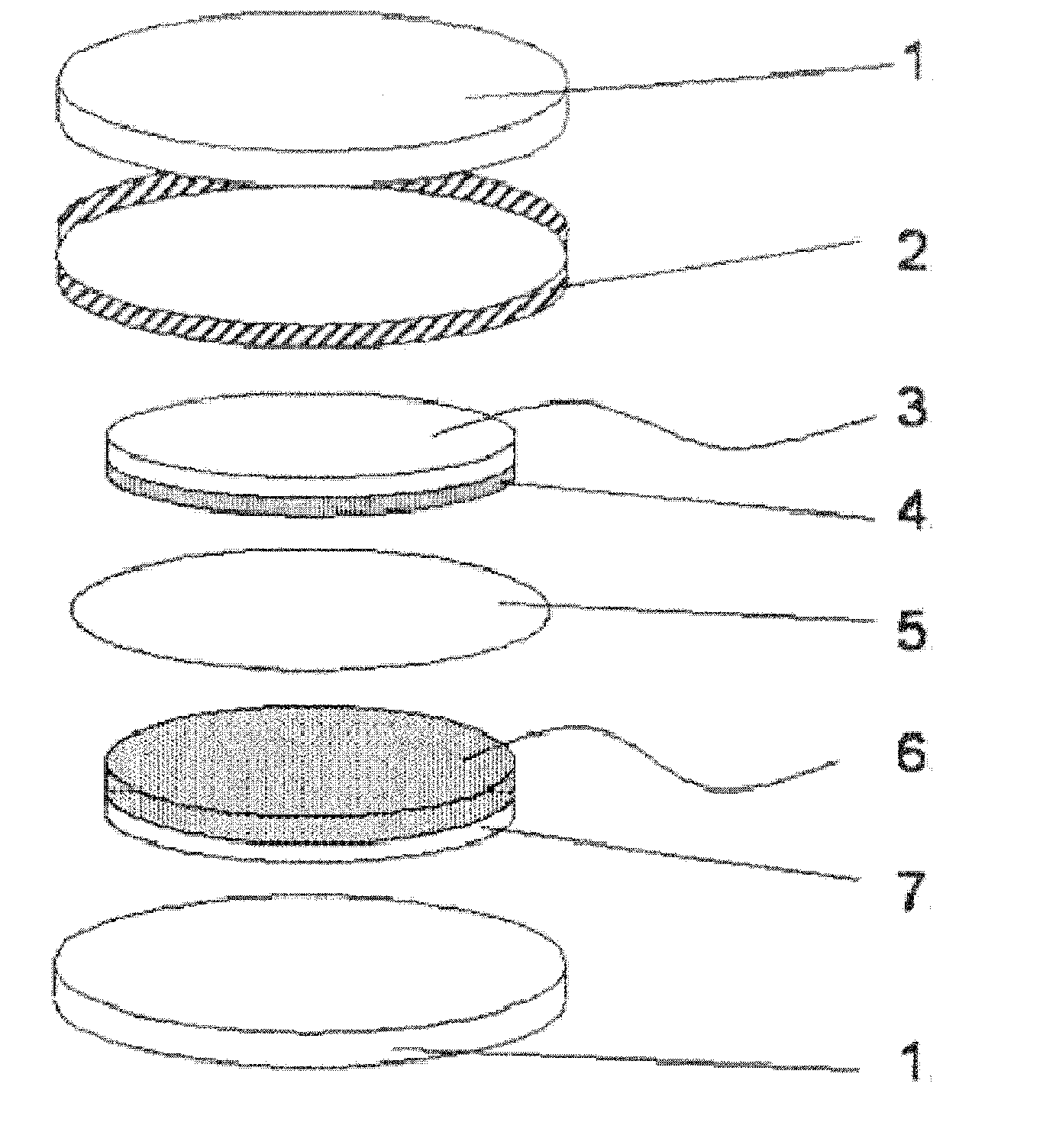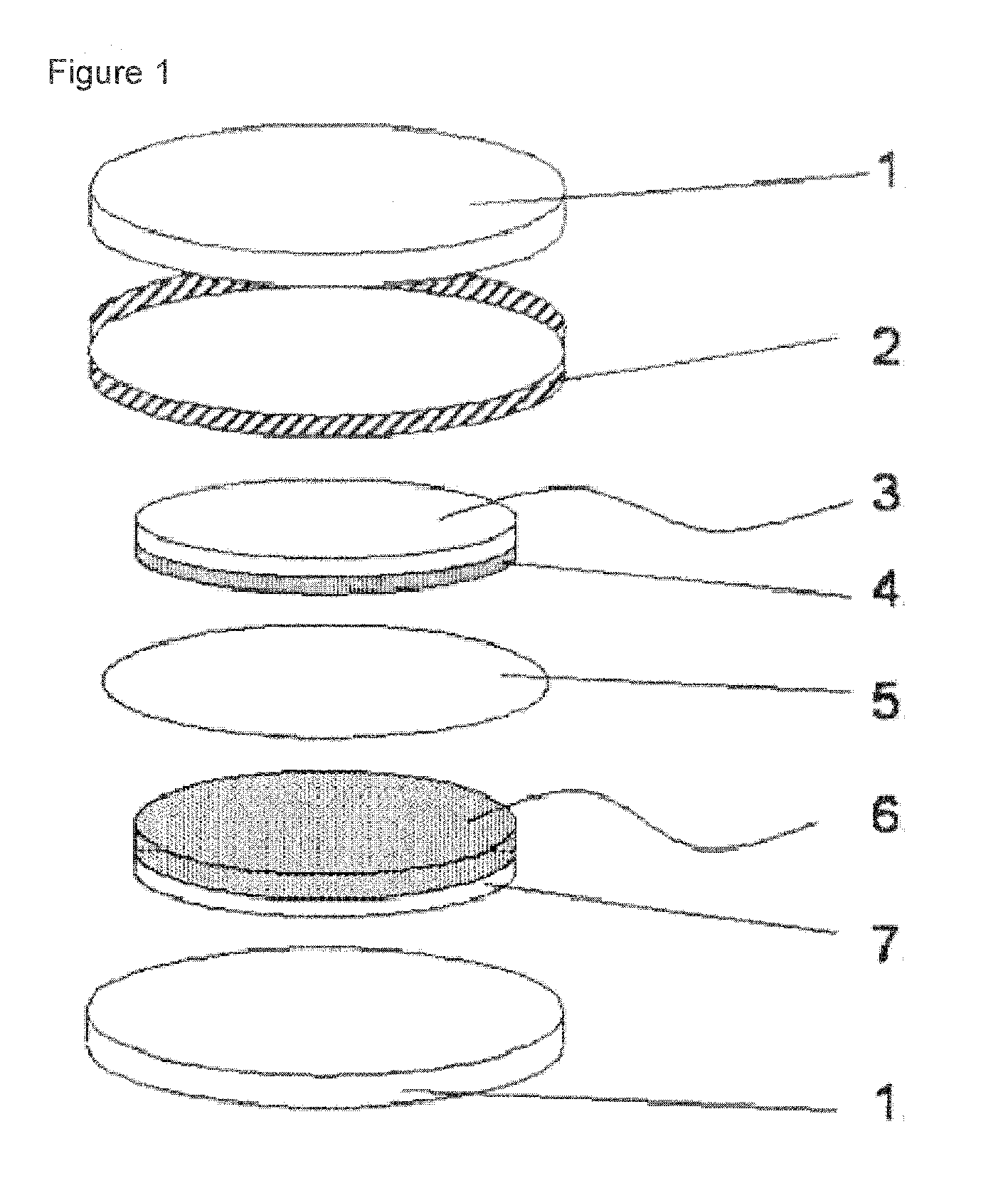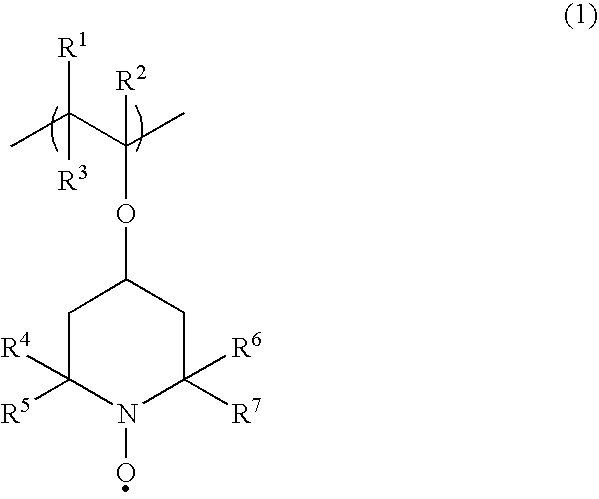Polyradical compound-conductive material composite, method for producing the same, and battery using the same
- Summary
- Abstract
- Description
- Claims
- Application Information
AI Technical Summary
Benefits of technology
Problems solved by technology
Method used
Image
Examples
example 1
[0074]40 g of pure water was weighed in a small homogenizer vessel, and 400 mg of a carboxy methylcellulose (CMC) was added thereto, and stirred for 30 min and completely dissolved therein. Then, 100 mg of a polytetrafluoroethylene (PTFE) was added thereto, and further stirred for 30 min and completely dispersed therein. 9.5 g of the polyradical compound-electric conductivity-imparting agent composite (a) (PTVE / VGCF weight ratio=7:2.5) produced in Producing Example 1 was added thereto, and stirred for 30 min until the whole became homogeneous to obtain a slurry. The obtained slurry was applied on an aluminum foil, and dried at 50° C. to fabricate a cathode. The cathode layer had a thickness of 100 μm. The fabricated electrode did not have peelings, cracks and the like observed, and had a uniform surface. The fabricated electrode was punched into a circle of 12 mm in diameter to form an electrode for a coin battery. The electrode had a weight of 9.1 mg.
[0075]Then, the obtained electr...
example 2
[0077]A coin battery was fabricated by the same method as in Example 1, except for using the polyradical compound-electric conductivity-imparting agent composite (b) produced in Producing Example 2 in place of the polyradical compound-electric conductivity-imparting agent composite (a). The fabricated electrode did not have peelings and cracks observed, and had a uniform surface. The cathode of the coin battery had a weight of 10.1 mg. The results of the charge / discharge tests thereafter performed as in Example 1 are shown in Table 1
example 3
[0078]A coin battery was fabricated by the same method as in Example 1, except for using the polyradical compound-electric conductivity-imparting agent composite (c) produced in Producing Example 3 in place of the polyradical compound-electric conductivity-imparting agent composite (a). The fabricated electrode did not have peelings and cracks observed, and had a uniform surface. The cathode of the coin battery had a weight of 9.5 mg. The results of the charge / discharge tests thereafter performed as in Example 1 are shown in Table 1.
PUM
| Property | Measurement | Unit |
|---|---|---|
| Time | aaaaa | aaaaa |
| Particle diameter | aaaaa | aaaaa |
| Particle diameter | aaaaa | aaaaa |
Abstract
Description
Claims
Application Information
 Login to View More
Login to View More - R&D
- Intellectual Property
- Life Sciences
- Materials
- Tech Scout
- Unparalleled Data Quality
- Higher Quality Content
- 60% Fewer Hallucinations
Browse by: Latest US Patents, China's latest patents, Technical Efficacy Thesaurus, Application Domain, Technology Topic, Popular Technical Reports.
© 2025 PatSnap. All rights reserved.Legal|Privacy policy|Modern Slavery Act Transparency Statement|Sitemap|About US| Contact US: help@patsnap.com



